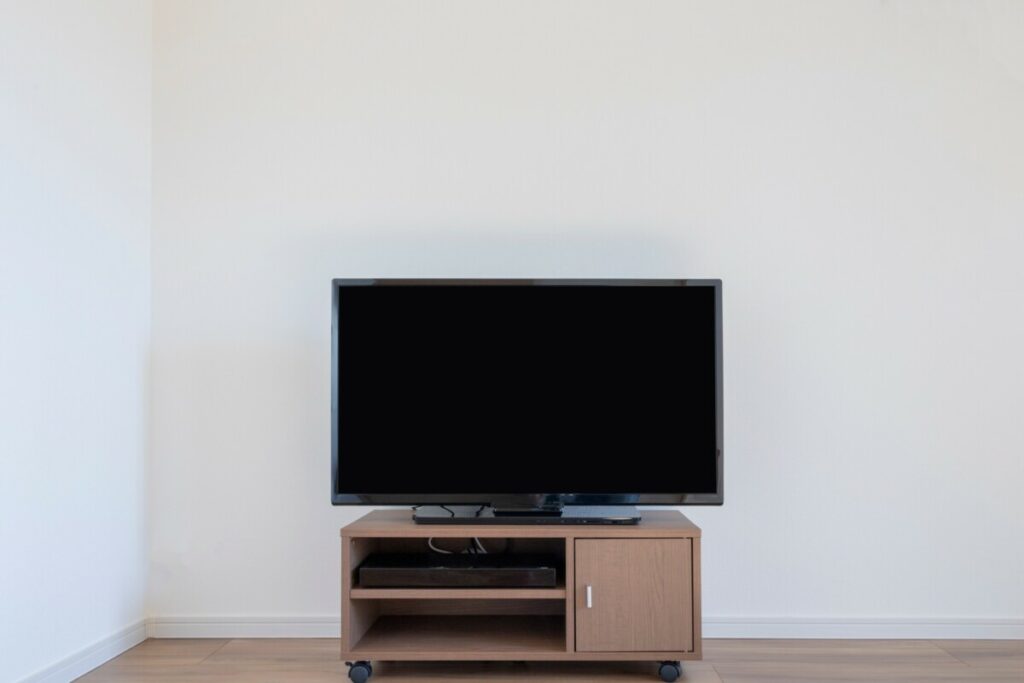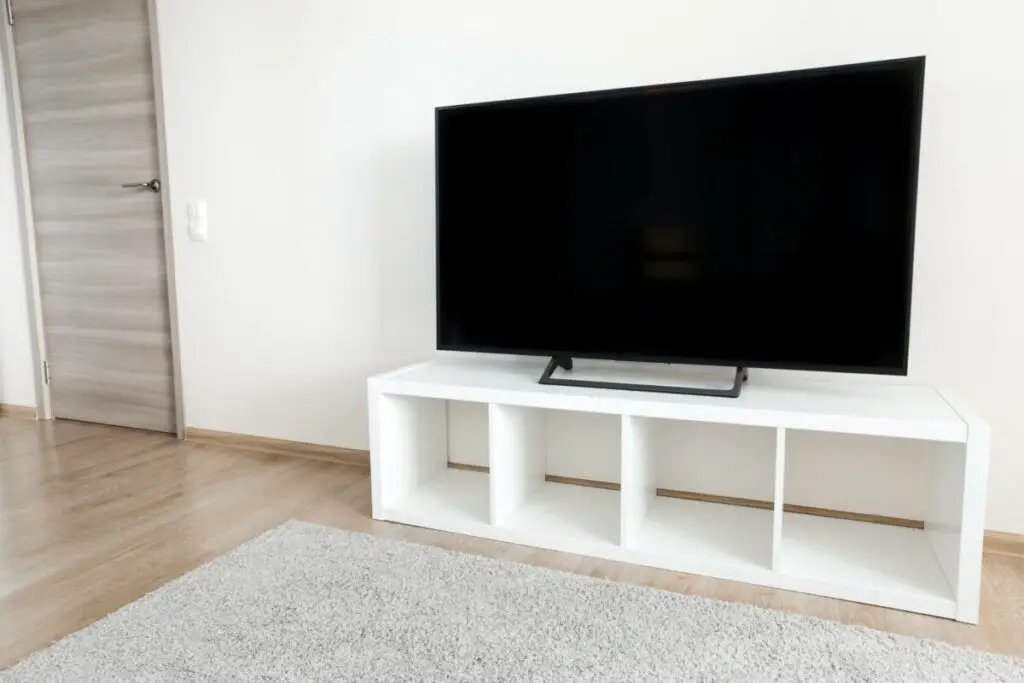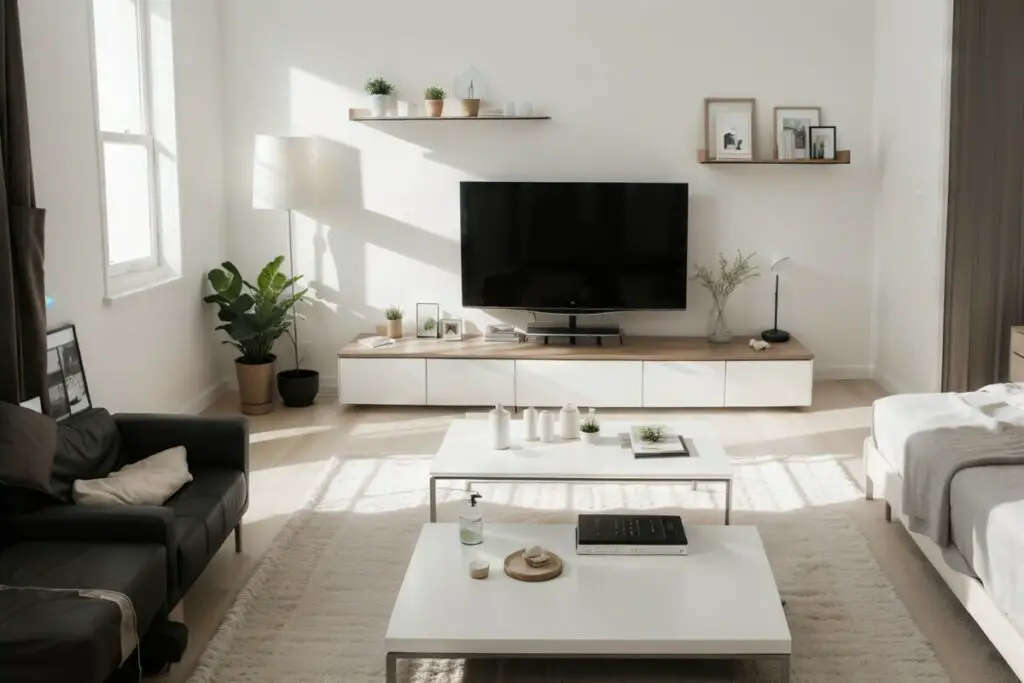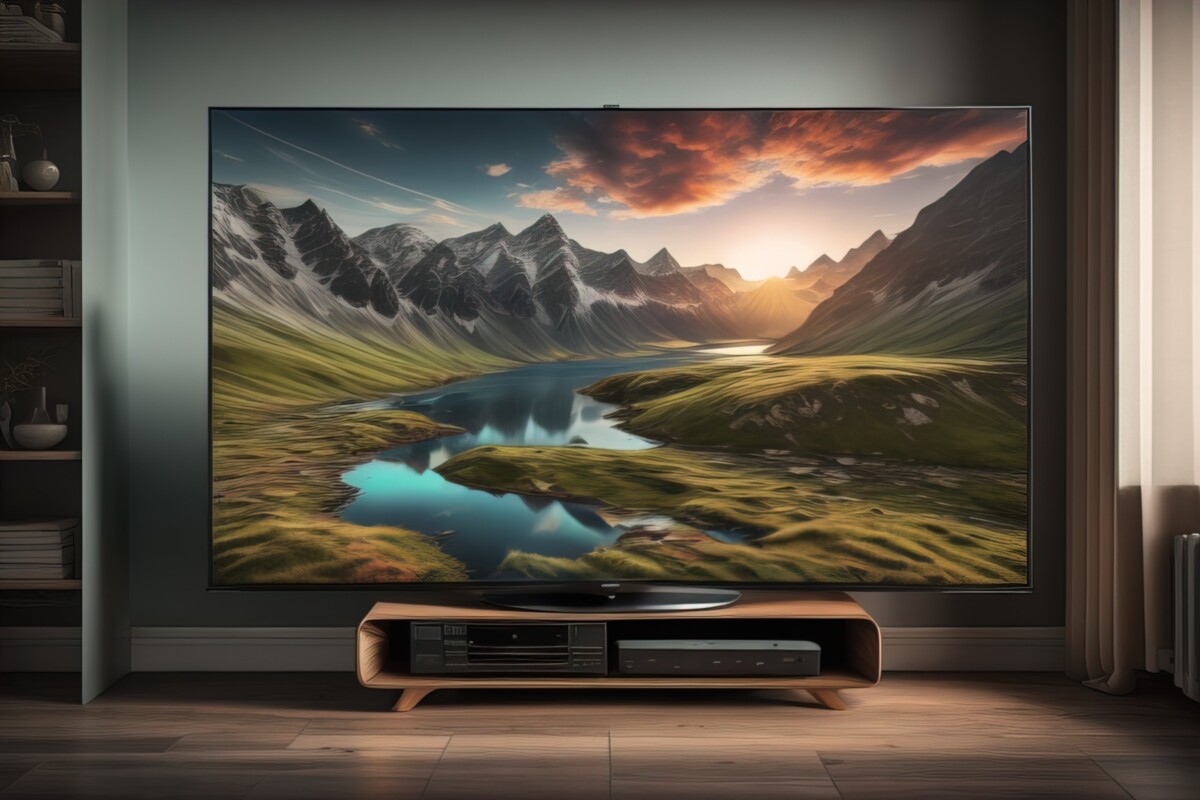As an Amazon Associate I earn from qualifying purchases
Can a TV be larger than the stand?
A TV can be larger than the stand but it cannot weigh too much as to break the stand. You need to consider certain factors like the size, and weight before you place your TV on any Stand.
Also having a large TV on a small stand might not be the most aesthetic choice.
You can tell how much weight a stand can support by reading the product description.
Can Your Bigger TV Rest on a Smaller TV Stand?

When you’re in the market for a new television, it’s not uncommon to entertain the idea of upgrading to a larger TV.
After all, a bigger screen can provide a more immersive viewing experience.
However, a common question arises: can a larger TV exceed the dimensions of your existing TV stand?
The answer hinges on multiple factors that ensure stability, aesthetics, and the longevity of your home theater setup.
TV stands are designed to support a certain weight and size of television.
Before placing a bigger TV on a stand that’s smaller in size, you must consider the specifications of the stand.
If the stand can support the weight of your new bigger TV, you might be able to proceed, but that’s not the only consideration.
The depth and width of the stand are crucial to ensuring that the TV doesn’t overhang in a manner that could lead to tipping or accidents.
If your larger TV’s base or legs are within the confines of the stand’s surface area, you could have a match that is both functional and stylish.
It’s also important to be cognizant of the aesthetic harmony in your viewing space.
A TV that’s bigger than its stand may detract from the overall look and feel of the room.
Ideally, the stand should complement the TV, creating a balanced focal point.
Also, if the TV overhangs excessively, it may not only pose a safety risk, but might also obscure any functionality or design features on the edges or corners of the stand.
Manufacturers produce a wide range of TV stands, with some being able to accommodate a larger TV perfectly, even if the TV itself seems bigger than the stand at first glance.
It is essential to check the stand’s maximum TV size and weight capacity before making a choice.
Safety should never be compromised when it comes to installing a bigger TV on a smaller stand.
Despite the temptation to simply place your larger TV on an undersized stand, it’s crucial to ensure that the stand will not become a hazard.
Assessing Stand Strength and TV Weight Compatibility

Now that we have established that weight and stand strength are important let’s discuss this in more detail.
TV stands are engineered with certain weight capacities in mind, and it is unwise to exceed these limitations for the sake of having a larger screen.
Moreover, just because a stand is labeled to support a certain inch TV, this doesn’t always translate to it being suitable for all TVs of that size; weight can vary significantly across different models and brands.
As such, always review the manufacturer’s recommendation for both stand strength and the TV’s weight before making a decision.
Another aspect to consider is whether the furniture piece meant to hold your TV, such as a cabinet or entertainment unit, is adequately wide to accommodate a TV that is larger than or wider than the stand itself.
While the edges of the TV extending beyond the sides of the stand may not be a deal breaker for some, it’s a design choice that ought to be made with caution.
From a safety perspective, a TV stand that is not much wider than your television helps to minimize the risk of the TV being inadvertently knocked off.
Keep in mind that while a TV stand may be capable of supporting a TV that is larger, the overall size and width of the stand still play a significant role in the setup’s stability.
For instance, placing a 65-inch TV on a stand tailored for a 50-inch TV may seem feasible if the weight criteria are met.
However, the unit must still be evaluated for stability, and in many cases, a stand larger than your TV may offer better peace of mind.
Ultimately, the question isn’t simply ‘can’ a TV be larger than the stand but also ‘should’ it be, considering the various parameters of both the TV and the stand.
The emphasis on balancing a larger screen with the ideal furniture speaks to the essence of home entertainment design, where functionality should intersect with style.
If you do choose to place a TV on a stand that is smaller, additional precautions might be required, such as securing the TV to the wall for enhanced stability.
Why Size and Proportions Matter for Your TV and Stand Setup

Understanding the dynamics of size and proportions is crucial for your tv stand setup, particularly when integrating a bigger tv into your living room.
While your aesthetic preferences may lean towards a larger tv dominating the space, considering the dimensions of tv stands is essential before making a purchase.
The concern isn’t solely about aesthetics; safety and functionality come into play as well.
Imagine a stand that’s narrower in width, where the edge of the inch tv extends beyond its sides.
This scenario not only impacts the overall look but may pose a tipping hazard if the stand isn’t designed to support a tv wider than its frame.
Moreover, when tv stands are outmatched by the size of the tv, it could lead to potential instability or stress on the furniture, compromising its longevity.
This consideration is especially important if the room where the tv will be placed is frequented by children or pets, as a well-balanced stand is less likely to cause accidents.
Does size really matter? Certainly, the size of both your tv and the stand upon which it rests can transform the room’s ambience.
A stand that is proportionate to your tv creates a sense of harmony and intentionality in your space.
A stand that’s too small, however, can make the room feel cramped or unintentionally eclectic.
Additionally, when it comes to setting up your tv stand setup, the size isn’t the only aspect to ponder—consideration for the wall against which the stand will sit is equally important.
A stand that complements the wall space, without overwhelming it or looking dwarfed, achieves visual symmetry.
In assessing stand strength and tv weight compatibility, you don’t want to disregard the importance of size.
A tv that’s heavier than what the stand can support is a risk not worth taking.
Manufacturers often specify the maximum weight capacity and recommended inch tv size for stands; adhering to these guidelines ensures both your larger tv and stand will coexist safely and durably.
Does your stand have the structural integrity to accommodate the scale of your new tv? It’s a critical question to answer.
The interplay between room, furniture, and the electronics they host is a symphony of functional design.
As we delve into preferences for larger tv options, the scale of tv stands must be proportionately considered.
When your living space harmoniously houses a tv wider than, or equal to, your stand’s measurements, and respects the specified weight limits, your entertainment experience is both elevated and secure.
Therefore, when it comes to successful tv stand setup, the answer is clear: size does matter, as do proportions—the balance between the two defines the aesthetics and safety of your space.
Enhancing Room Aesthetics with the Right TV and Furniture Dimension

When considering enhancing room aesthetics, one must reflect on the interplay between various elements within the space.
Chief among these considerations is the balance between your TV and furniture dimensions.
It’s a common question for homeowners: can TVs larger than the stand still contribute to a room’s decor?
While some may assert that a TV can overhang its stand, for optimal design, you should select a console that is at least a few inches wider than your TV.
This isn’t just about style; it’s about ensuring that the focus remains on the screen without compromising the room’s overall harmony.
In choosing the right TV and furniture dimensions, it’s not just about the width and height of the units, but how they relate to the space they inhabit. If you have a larger living area, a substantial TV could be suitable, but it’s vital to pair it with the right stand.
Wall-mounted TVs offer greater flexibility, freeing up floor space while still demanding thoughtful consideration of the surrounding furniture – from vanities to chairs – to craft a cohesive atmosphere.
The issue of scale extends beyond the living room and into various areas of the home.
Whether it’s integrating screen TVs into a dining area without overwhelming the space, or selecting lighting that complements your entertainment setup, each choice impacts the room’s aesthetics.
Tomorrow’s home designs might blur the lines between the kitchen and the living area, emphasizing open concepts and multipurpose furniture adaptable to evolving trends.
In such environments, maintaining the right proportions becomes crucial.
When thinking about a room refresh or a new installation, don’t overlook the furniture guides that provide invaluable information on the relationship between the size of your TV and the stand.
Such guides often stress the importance of giving your screen a few inches of breathing room in terms of width, ensuring that the unit appears intentional and well-placed within the space.
In conclusion, whether a TV can be larger than the stand does hinge on various factors.
Enhancing room aesthetics isn’t simply about embracing larger dimensions; it’s about the synergy between your TV, the stand, and the room at large.
From the lighting to the dining experience, from tomorrow’s kitchen designs to the width of wall units, and from vanities to guides on furniture dimensions – every aspect contributes to creating an inviting space.
Remember, while size does indeed matter, it is the right tv and furniture dimensions that truly enhances room aesthetics and elevates the comfort and appeal of your home.


